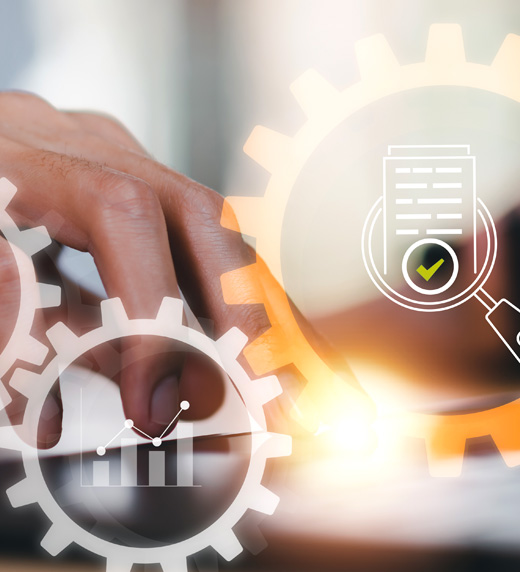
Artificial intelligence is empowering auditors to evolve their role:
Artificial intelligence (AI) is no longer just a buzzword or a blue-sky concept in internal audit. It’s already transforming how organizations plan, execute and elevate an internal audit.
When implemented thoughtfully, AI for business empowers the audit by positioning auditors as strategic, high-value advisors; enhancing decision-making through accurate, data-driven insights; delivering risk alerts through real-time anomaly detection; and enabling 100% transaction testing, far beyond traditional sampling.
In a recent survey of 7,000 audit professionals, 74% said they consider AI vital, while 92% view new technology as essential to the future of audit. Yet even with such high praise, many audit leaders remain cautious. What can AI actually do? What risks does it introduce? And how can it be deployed responsibly?
Despite its potential value, we’re seeing three key areas that continue to slow AI for business adoption in internal audit:
One expert described AI this way: “Generative AI is new and exciting, but it isn’t one thing. It’s a technology akin to the internet or electricity. The benefit of the tool is in the detail.” In other words, AI’s value depends entirely on how well it’s integrated, governed and aligned with organizational priorities.
Since AI first entered the tech governance landscape, its role within audit has significantly evolved. Once primarily focused on financial controls, regulatory compliance and post-event reviews, today, AI serves as an active partner in digital transformation — advising on AI, cloud adoption, automation and cybersecurity.
You could say internal audit has shifted from a compliance watchdog to a strategic advisor, helping organizations manage digital risk and enable innovation. Emerging AI-related domains now include AI governance and ethics, algorithmic accountability, data privacy and sovereignty, as well as the management of Shadow IT — the unauthorized use of technology systems, software, devices or services.
Thanks to AI, tasks that once took 30 to 40 hours can now be completed in a matter of hours or even minutes. And because AI applies consistent logic and criteria across audit activities, it significantly reduces the risk of human error. Organizations that leverage AI in audit functions are more efficient, more proactive, and better protected.
| AI in Internal Audit: Key Functions/Platforms | ||
|---|---|---|
| Planning & Preparation |
Faster audit planning AI accelerates the creation of audit workbooks and assessment tools, reducing manual prep time. AuditBoard, Microsoft Copilot and Zania’s Compliance Agent streamline planning by generating risk-aligned templates, checklists and schedules. |
Automated tasks From scheduling to emails and project planning, AI handles routine administrative work efficiently. UiPath, Automation Anywhere and Zania automate intake, notifications and audit workflow coordination. |
| Execution & Fieldwork |
Less manual review AI scans documents and datasets, freeing auditors to focus on walkthroughs, analysis and validation. MindBridge AI, Caseware IDEA and Zania’s Security Agent accelerate evidence review by identifying anomalies, gaps or noncompliance in real time. |
Continuous auditing AI continuously monitors controls, enabling real-time risk detection instead of relying solely on periodic reviews. AuditBoard, Diligent HighBond and Zania support always-on auditing through integration with control systems and live data feeds. |
| Risk Monitoring & Response |
Real-time monitoring AI scans system logs, flags threats, and can trigger alerts or responses immediately. Microsoft Copilot for Security, Zania’s Security Agent and Splunk SOAR enable real-time detection and rapid escalation. |
Fraud detection AI detects fraud, cyber threats, and policy violations by identifying anomalies and unusual patterns in large datasets. MindBridge AI, Darktrace and IBM Watson for Cybersecurity use behavioral analysis to flag irregular activity. |
|
Risk detection tools Microsoft Copilot Security, SOAR and Zania continuously monitor for suspicious activity, map risks to control frameworks and respond automatically through AI-driven playbooks. |
||
So how does AI play out in the real world? McKinsey’s 2024 State of AI survey found that up to 43% of business units deploying generative AI reported increased revenue. Independent research also found that AI can accelerate internal audit processes by up to 80%, especially in tasks like compliance workflows, documentation review and data analysis.
Case in point: One small financial institution that adopted AI in its internal audit function has already seen measurable gains. They took a risk-aware approach, identifying potential threats, following established frameworks and onboarding teams in small study groups. AI now automates their PowerPoint presentations for weekly and quarterly meetings, populating KPI and performance data directly into templates. This shift has saved time and boosted productivity across reporting and marketing workflows.
On the audit side, they’ve integrated Microsoft Copilot to monitor their Microsoft Entra ID environment. Copilot ingests system logs, detects suspicious behavior and responds to threats in real time, strengthening their overall security posture.
While AI brings significant advantages to internal audit, it also introduces a range of emerging risks — particularly around data governance, privacy and regulatory compliance. Without proper oversight, organizations may unintentionally expose sensitive information or fall out of compliance with evolving legal standards. Key risks include:
Advanced threats also emerge: Deepfakes can be used to impersonate individuals, increasing the potential for financial scams and identity theft. The importance of verifying the authenticity of audio and video cannot be stressed enough, because you simply cannot believe your eyes or ears anymore.
The reality is, success with AI hinges not just on adoption, but on responsible governance and ongoing risk assessment. Tools must be aligned with audit objectives, regularly evaluated and integrated into established oversight frameworks. To support this, several leading frameworks offer structure for safe and responsible adoption:
These frameworks help ensure AI aligns with business goals without introducing systemic risk. In addition to adhering to established standards, auditors and risk leaders should take the following precautions:
Clearly, AI is elevating the audit function into a real-time, insight-driven force. Whether you’re just getting started with AI or scaling existing efforts, discover how Armanino internal audit experts can help bolster both your audit performance and the people behind it.
Don’t let hidden risks derail your goals. Get an initial internal audit consultation to pinpoint critical control gaps and learn next steps to strengthen your defenses.


